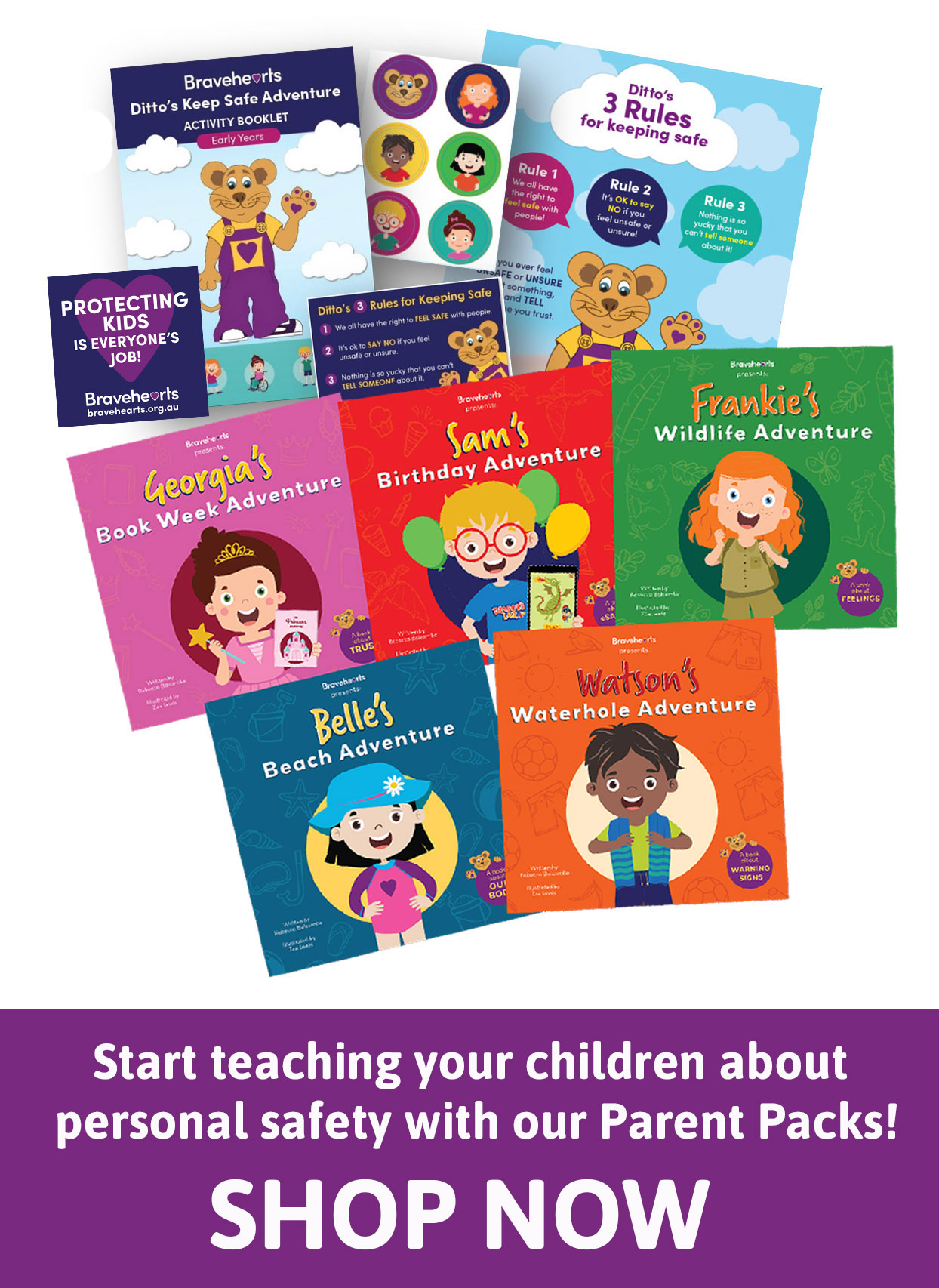Category
Helpful Links
- Home > Latest News > It’s Not Just the Child: Understanding Grooming in Early Learning Settings
It’s Not Just the Child: Understanding Grooming in Early Learning Settings
By Kate McGill, Education Project Manager, Bravehearts
When we talk about grooming, most people think of a child being targeted by someone with harmful intent. While this is true, what is less widely understood and just as important is that grooming doesn’t stop with the child.
To understand how grooming in early learning settings happens (and how to prevent it), it is important to understand that perpetrators groom not only the child but those around them. Offenders in these settings will work to build trust with educators, centre leaders, and even families. Why? Because trust creates access. And access is what allows harm to occur undetected.
At Bravehearts, we’re committed to helping early learning communities understand what grooming looks like and how to prevent it.
What is grooming?
Grooming describes the preparatory (or ‘lead up’) stage of child sexual abuse that offenders use to gain the trust and compliance of the child or young person (and those around them) and to establish secrecy and silence to avoid disclosure. Grooming can unfold over time, and can often look like helpful, friendly, or even generous behaviour. Grooming hides behind harmless.
But underneath that behaviour is manipulation: slowly building trust to lower suspicion, isolate a child, and silence concerns.
Grooming the adults, not just the child
In early learning environments, grooming can include:
Grooming staff and leaders
- Appearing helpful, overly dedicated, or eager to ‘go above and beyond’
- Forming close relationships with colleagues to appear trustworthy or indispensable
- Quietly bending rules, like volunteering to take children into less supervised spaces
Grooming families
- Developing unusually close relationships with certain parents or carers
- Offering to help outside of normal hours or in ways that blur professional boundaries
- Using charm or perceived authority to discourage questions or concerns
Grooming the child
- Giving gifts, treats, or special privileges
- Creating secrecy (“This is just between us”)
- Slowly crossing physical or emotional boundaries
Grooming ‘red flags’ in early learning environments
While every situation is different, here are some behaviours that should raise concern within an early learning environment:
- One educator consistently spending one-on-one time with a child in isolated areas
- An adult forming special “friendships” with children or families
- Staff bypassing policies around supervision, boundaries or privacy
- Resistance to oversight or defensiveness when questioned
- Children expressing discomfort or withdrawing around certain people
If something doesn’t feel right, it’s important to speak up, even if you’re not sure.
How early learning centres can protect children
Building a child-safe culture means being proactive, not reactive. Here’s how centres can strengthen their safeguarding practices:
- Establish clear boundaries in codes of conduct and daily routines
- Supervise and design environments to reduce opportunities for isolation
- Ensure all staff are trained in child protection, recognising grooming, and reporting concerns
- Promote open communication so staff, children, and families feel safe speaking up
- Create safe complaint pathways for both staff and parents
No one should ever feel unsure about what to do if they see or hear something concerning.
Raising a concern: what to do
For staff
- If you notice a red flag or feel something isn’t right:
- Speak to your centre director or nominated supervisor
- Document your concern factually — include what you saw or heard, not just how you felt
- Know your reporting obligations under mandatory reporting laws in your state or territory
You’re not making an accusation, you’re raising a concern to help keep children safe. It’s not up to centres to investigate, and it should never be left to an individual to decide whether something is ‘serious enough’. If a child may be at risk, it must be reported.
For families
- If something worries you about how your child is treated or how someone behaves:
- Raise it with your centre’s director or nominated supervisor
- Be specific about what you’ve noticed, even if it feels minor
- Ask about the service’s child protection policies and how concerns are followed up
Services must take all concerns seriously and act on them. That means following appropriate reporting procedures. It’s not up to centres and staff to investigate, but it is up to them to report. Ignoring or dismissing concerns can place children at risk.
Your voice matters.
What if you’ve raised a concern, but nothing seems to happen?
Sometimes staff or families raise a concern through the proper channels, but feel like nothing has changed or that the concern hasn’t been taken seriously. That can be incredibly frustrating, especially when you’re worried about a child’s safety.
Here’s what to do next:
For early learning staff and services
If you’ve reported a concern internally but are still uneasy:
- Trust your instincts. If you believe a child is in immediate danger, call 000 straight away.
- You can also report directly to your local child protection service. You do not need permission from your employer to do so.
- Document your concerns clearly and factually, including dates and who you spoke to.
- Follow up in writing with your centre leadership if you haven’t received an outcome or update.
- If the issue involves a breach of standards or policy, consider contacting your relevant state or territory early childhood regulator.
- Bravehearts’ Information and Support Line is also available for guidance and support: 1800 272 831 (Mon to Fri, 8:30am – 4:30pm AEST)
For families and carers
If you’ve raised something with your child’s service and still feel unsure or unheard:
- If a child may be at immediate risk, call 000. You do not have to wait.
- You can contact your local child protection service directly. You do not need to go through the centre.
- Put your concern in writing and ask the service for a clear explanation of how it’s being addressed.
- Request access to the service’s grievance or complaints process.
- You can also contact your state’s education department or early childhood authority to escalate your concerns.
- Bravehearts can support you through the process. Call 1800 272 831 (Mon to Fri, 8:30am – 4:30pm AEST) for advice or referrals.
Child protection concerns should never be dismissed. If something doesn’t feel right, speak up. If you’re not heard, keep going. Whether you’re an educator or a parent, you have the right and responsibility to act in a child’s best interests. And you’re never alone in doing so.
Where to go for help, information and resources
Bravehearts is here to support early learning professionals and families. Our free resources, professional training, and programs like Ditto’s Keep Safe Adventure help build confidence and child-safe cultures across Australia.
- Explore Bravehearts’ grooming prevention resources
- Looking for training? Learn more about our child protection eLearning courses
- Parents and Carers: Download Bravehearts’ Free Guide to Protecting Children and Young People from Sexual Abuse
- Visit National Office of Child Safety for resources and information
- Visit eSafety Commissioner for resources and information about online safety
- Visit the AFP-led Australian Centre to Counter Child Exploitation (ACCCE) for advice and information around reporting
- Need support or advice? Call the Bravehearts Information and Support Line: 1800 272 831 (Mon to Fri, 8:30am – 4:30pm AEST)
Final word
Protecting children is a shared responsibility, and it starts with understanding how grooming works, how to recognise it, and how to respond. By staying alert, trusting your instincts, and speaking up, we create safer centres where children can grow, play and thrive.
 BACK
BACK

